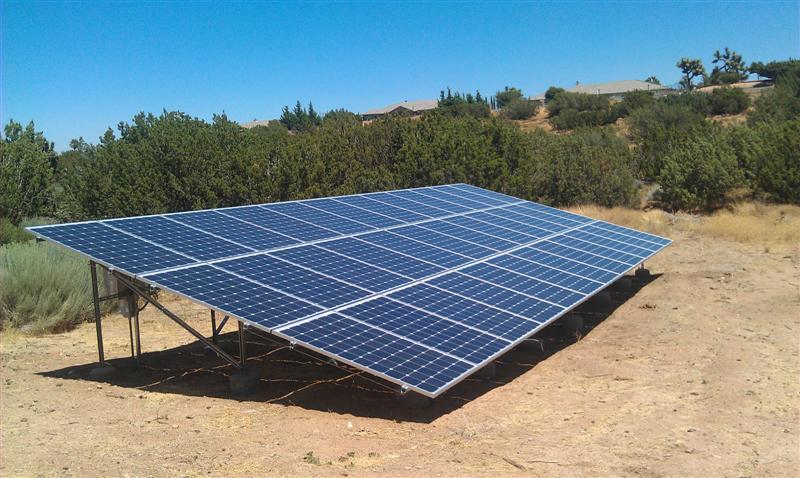
Photovoltaic technology is viewed as a great alternative for clean energy. Photo: Archive Hawaii Ahe
By Nikki Garrett Metzger
Staff Writer
(Honolulu)– As we move into the hottest months of the year, our thoughts should turn to the best ways to conserve energy in order to cut our energy costs.
Over the last year the typical electric bill for a typical residential household has risen about $61, according to Peter Rosegg with Hawaiian Electric Company. Of that $61 increase, $57 was for fuel.
“A typical electric bill is well over half just to pay for the fuel. And Hawaiian Electric doesn’t take any profit from that. We buy the fuel, we use it, and we charge the customer on a prorated basis just what it costs us,” Rosegg said. “It doesn’t do us any good to have high fuel prices. Quite the contrary, we know it, we feel the pain, we all live here too, as this utility is locally owned and operated.”
According to Hawaii Energy’s website 11.3 million barrels of petroleum were burned by the Hawaii utilities last year to make electricity. With the cost of a barrel of oil on the rise continually, Hawaiian Electric is actively researching and pursuing renewable forms of energy. This includes solar, wind, bio fuels, geothermal, sea water, and even waste-to-energy options.
Rosegg said HECO.com is a wealth of information on energy saving tips, money saving tips, and things you can do to analyze your home’s energy usage.
“Every summer we put out a brochure called Cool Tips for Summer, and air conditioning is one of the biggest users of electricity,” he explained. “There are ways to be more efficient with your air conditioner: clean out the filter, make sure your air conditioner is on the shaded side of the house, things like that. We try to help people on a day to day conservation oriented basis.”
So – what other things can you do to reduce your energy costs?
Replace regular incandescent light bulbs with compact fluorescent light (CFL) bulbs
CFLs use one-fourth the energy of an old-fashioned incandescent bulb, last longer and are cooler, reducing the need for air conditioning. Changing just one 100-watt bulb to an equivalent 26-watt CFL, based on three hours use per day, can save 81 kWh and up to $24 per year per bulb.
Use fans instead of air conditioners
Use fans instead of air conditioners, a savings of $71 per month. A ceiling fan on for eight hours per day uses 24 kWh per month or $7. An air conditioner (12,000 Btu/H, EER 11.0) running eight hours per day uses 262 kWh or $78 per month.
Shorten showers
Cutting just two minutes per shower could save up to 463 kWh and $139 per year.
Fix leaky faucets
One drop each second can waste about 1,661 gallons of water a year. A leaking hot water faucet wastes both water and up to $79 in energy costs per year.
Wash clothes in cold water
Switching from Hot Wash/Warm Rinse to the Cold/Cold cycle on a standard, top-loading washing machine for just two loads a week can save 225 kWh and $68 per year.
Eliminate energy sneakers (phantom load)
Even when turned off, things like hairdryers, cell phone chargers and televisions use energy. Use a power strip to conveniently turn off computers (after properly logging off), monitors, printers and chargers for camera batteries, phones and PDAs, all of which use standby power when not in use. Using a power strip to turn off your computer alone can save 50 kWh and $15 per year.
Air dry dishes
Letting dishes air dry instead of using heated drying on the average dishwasher saves 110 kWh and $33 per year.
No peeking
Limiting how often and how long you open the refrigerator will save electricity and protect the appliance. Also limit opening the oven while cooking or baking to save electricity; protect the appliance and speed up cooking times, too.
Install motion/occupancy detectors indoors and out
Cutting use of a 150-watt, outdoor flood light from six hours to one hour per night with a motion sensor saves up to 270 kWh and $81 per year. Switching off a 100-watt light for just one, 8-hour day per week, can save 41 kWh and over $12 per year.
“We are now in a very aggressive position trying to get off of oil,” Rosegg said. “With the Hawaii Clean Energy Standards we are required to reach 40% of renewable energy by 2030, but we are determined to go beyond that and get as much renewable energy on our system as possible as soon as possible.”
For more information visit www.HECO.com or www.HawaiiEnergy.com

